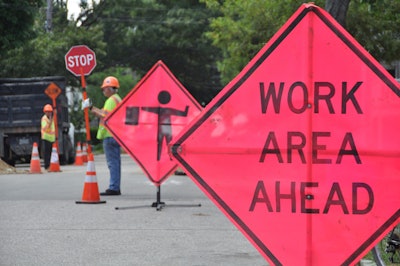
Uncontrolled bleeding can lead to death in as little as three to five minutes. Do your construction teams have the necessary skills and resources to control bleeding in an emergency?
Bystanders and those on the scene are often the first to witness and respond to bleeding emergencies. Emergency services can take several minutes to arrive, and knowing how to stop bleeding in the interim may make the difference between life and death.
That’s because uncontrolled bleeding is a leading cause of death in trauma situations, responsible for 35% of pre-hospital deaths and 40% of deaths within the first 24 hours of a traumatic event, according to the National Trauma Institute.
STOP THE BLEED is a nationwide campaign to raise awareness of the importance of controlling bleeding in emergencies. Launched in 2015, the campaign provides a range of resources, including online training modules, instructional videos and live training sessions to equip individuals with the necessary knowledge and skills to respond effectively to bleeding emergencies. More than 2.6 million people have learned these essentials through STOP THE BLEED training.
It's not just catastrophic events -- accidents around the house and sports injuries can also result in life-threatening blood loss. Excessive bleeding can cause long-term damage to the body, impacting the victim’s quality of life. So it’s crucial to equip more people to become immediate responders in a bleeding emergency until professional help arrives.
Some of the key things you can do to prepare for a bleeding emergency include:
- Learn the basics of bleeding control, such as applying direct pressure to the wound, packing the wound with gauze and using a tourniquet if necessary.
- Keep a bleeding control kit nearby in case of emergency. This kit should include items like gauze, gloves and a tourniquet.
- Take a STOP THE BLEED training course. These courses provide individuals with hands-on training and practice in tourniquet placement and bleeding control techniques.
Your MRO supplier should offer a range of trauma kits and individual bleeding control kits. Trauma kits provide the materials individuals need to treat the most common injuries on worksites and in the workplace, in public buildings and in public access areas.
Numerous states have introduced bills regarding bleeding control kits. California AB 2260, signed by the governor in September 2022, requires trauma bleeding control kits to be installed in newly constructed public and private buildings throughout the state.
Life-threatening bleeding warrants immediate intervention. It’s an emergency that can happen anywhere, at any time. With the right knowledge and resources, anyone can be equipped to respond and potentially save a life.
Partner with your suppliers to stock essential aid components, take advantage of STOP THE BLEED campaign resources and commit to being prepared for bleeding emergencies. #stopthebleed




















